Papillomas are benign neoplasms localized in the skin and mucous membranes. These are caused by the activation of human papillomavirus (HPV) and are very different types. Some are harmless and only cause a cosmetic defect, others are potentially dangerous and can turn into a cancerous tumor.
Mechanism of papillomas
The appearance of a particular type of neoplasm depends on the type of virus that a person is infected with. Separate oncogenic strains where growths do not pose a significant threat to the carrier and are less oncogenic. Neoplasms are caused by the papillomavirus, whose movement leads to excessive cell division, resulting in a gradual increase in growth.
"Safe" papillomas usually occur on the skin, the most disturbing are localized in the mucous membrane.Such neoplasms generally cause highly oncogenic strains of the virus. For women, the appearance of growths in the genital area can be dangerous for cervical cancer.

Ordinary papillomas
One of the most common manifestations of HPV is popularly known as "warts". Their appearance is generally due to the effects of low oncogenic strains transmitted through contact and household contact.
Warts usually occur on the fingers, palms, soles or feet.
Externally, they resemble small papillary neoplasms with a homogeneous structure. Normal papillomas are soft to the touch and have poor pigmentation at the onset of the disease: the color is virtually indistinguishable from the color of the body.
However, as the disease progresses, it grows and begins to darken. Sometimes hair can grow in the center of the wart.
Filiform papillomas
This type of papilloma is named for its small legs due to the fact that the neoplasm rises above the surface of the skin. It has an elongated shape and is about 5 mm in size. Papillomas are often localized to the most delicate skin:
- chest;
- neck;
- eyelids;
- groin area;
- armpits.
Filiform papillomas are more common in patients over 45 years of age, but are more common in young people. As the disease progresses, the growths tend to grow even larger.Gradually they start to stretch more.
Papillomas are yellow or pink on the head, with no obvious pigmentation. A keratinized neoplasm is rare. There is no pain with trauma. Several people may also appear at the site of the damaged filiform papilloma. If growths are present, it is advisable to stop using scrubs or brushes. Papillomas in the underarm area are often injured by razors, which can adversely affect the health of patients.
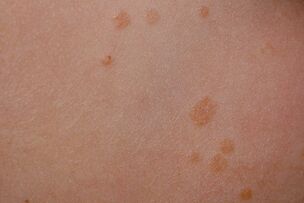
Straight papillomas
This form of papilloma is localized on the skin and looks like small plaques. Flat papillomas are yellowish in color, no more than 1-2 mm in size. The growths are dense in structure, the roots are located under the skin. For this reason, pain may occur during injury or pressure. In addition, this structural feature sometimes leaves scars after the accumulation has been removed.
Typical symptoms that accompany the appearance of straight papillomas:
- redness of the skin around the growth;
- itching;
- pain on touch;
- inflammation.
Growths are usually seen on the face or hands, but sometimes on the genitals. It is usually found in the labia majora in women and in the scrotum or anus in men. Straight papillomas grow rapidly and bleed when traumatized.
Genital warts
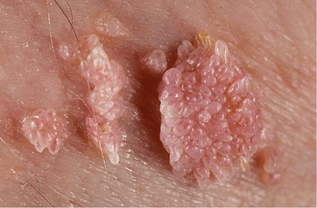
These growths usually occur in the groin or mucous membranes. They are caused only by HPV strains that occur during unprotected sex. Most hit:
- vagina;
- vulva;
- cervix;
- anus area;
- scrotum;
- penis.
Growths resemble thin papillae, small - 2-3 mm. In general, the virus is not limited to the appearance of a single neoplasm. Warts are characterized by the appearance of several growths that gradually merge with each other. Neoplasms grow and grow rapidly. At this time, their shape begins to resemble cauliflower blooms.
Genital warts are one of the most dangerous types of papillomas.In addition to the fact that these growths can turn into malignant tumors, an infection often joins them. In addition, neoplasms are prone to relapse after removal, so patients will need to be routinely screened to monitor HPV levels.
In rare cases, condyloma can occur in the walls of the stomach or in internal organs such as the rectum. In this case, it is impossible to independently determine the presence of a neoplasm. Lack of specific symptoms can be a problem in the diagnosis and treatment of the disease.
Lewandowski-Lutz papillomas
A very rare type of papilloma. It often occurs in the legs and hands. A distinctive feature of plants is the uneven edges. They are usually brown, but can sometimes be dark red. This form of the disease can also help neoplasms to become malignant, so patients should see a doctor immediately.
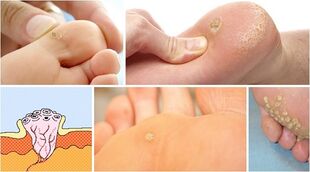
plantar warts
These growths are more typical for children and adolescents, rarely occurring in adulthood. It is a common reaction to a decrease in immunity that is accompanied by heel trauma due to uncomfortable shoes. Unlike simple sneezes, warts are rough and the edges are cut. In addition, the skin pattern is clearly visible on the callus.
Plantar warts are characterized by a small spot on the surface of the skin and a large base that grows under the skin. It is generally completely keratinized due to constant wear during walking. Over time, the growth increases, and squeezing or touching them causes discomfort and pain.
Due to the nature of the structure, warts are difficult to remove from the skin, because most of them are inside. Therefore, it is necessary to apply stitches often after removal, and a scar may remain at the site of the procedure.
Juvenile papillomas
Most infections occur in children under 5 years of age, because the infection usually occurs at birth. If a pregnant woman is a carrier of papillomavirus and has genital warts in the vaginal area, the baby is more likely to be infected.
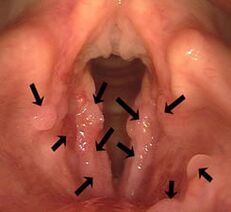
Juvenile papillomas on the skin are not dangerous. However, it can be localized in the larynx, which can cause the baby to have difficulty breathing. At the initial stage, no symptoms of the disease are observed. After a while, the following symptoms appear:
- a lumpy feeling in the throat;
- difficulty swallowing saliva or food;
- respiratory dysfunction.
Older children may have bone changes, which is a characteristic sign of garden damage. Papillomas can grow and cause asthma attacks, which can one day result in complete cessation of breathing.
Papillomatosis
Papillomatosis is a disease in which the number of neoplasms increases sharply and spreads throughout the body. It is also called generalized papillomavirus. Usually a large accumulation of papilloma occurs on the hands, face and genital area. Papillomatosis, which occurs in the mucous membranes or internal organs, is potentially dangerous to humans.
Often, papillomatosis is noted when juvenile papillomas appear in the larynx. They are already prone to growth.
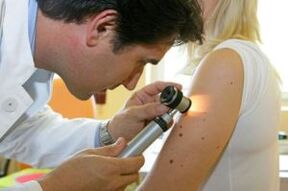
Result
Although there are relatively safe forms of papilloma, each one needs to be examined regularly by a specialist. This will help keep the growth under control and remove it immediately if necessary. In addition, it is important to remember that the presence of neoplasms is an indication of papillomavirus infection that requires timely therapy.























